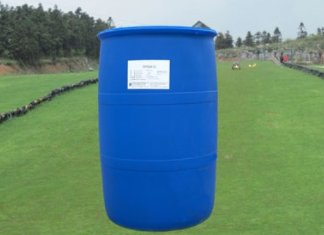Compared with chemical surfactants, biosurfactants have the advantages of biodegradability, low toxicity and simple production by microbial fermentation. They have a wide application prospect in red tide control. Rhamnolipid biosurfactants produced in the culture of Pseudomonas aeruginosa have strong antibacterial activity. At the concentration of 1.0-3.0mg/l, it significantly inhibited the growth of Prorocentrum in the East China Sea in the delay period. For algae cells in exponential phase, when the concentration of rhamnolipid was 15.0 and 20.0mg/l, broken algae appeared under the microscope after 2.25h. After 5.25 h, most of the algal cells were broken, and the unbroken algal cells became spherical or left only cavities. No algal cells were observed after 10.25 H.

Biological methods have the ability to quickly absorb nutrients, which can be taken out during harvest and reduce the degree of eutrophication in water. It has been reported that cultivating macroalgae is one of the effective measures to absorb and utilize nutrients and prevent eutrophication.
Zhu and others use Ulva lactuca, Gracilaria, Laminaria algae and other aquaculture organisms such as fish, shrimp and shellfish to effectively reduce the concentration of nutrients in the water body and reduce the possibility of red tide outbreak; Zhang Shandong and other research results show that asparagus rapidly reduces nutrients in the co culture system. From 120 h, the density of algal cells began to decline continuously and finally disappeared completely. Prorocentrum Donghai had no significant effect on the growth of asparagus. The absorption capacity of 1G fresh weight asparagus to NO-3 and PO43 - was equivalent to 6.0 respectively × 107、2.4 × 107 Prorocentrum cells from the East China Sea. At the initial densities of 10 g / L and 20 g / L, the number of cells of marine Prorocentrum showed a downward trend after 6 days of the experiment, and the red tide heterocurus algae nearly died after 6 days of the experiment.
Using allelopathy to control algae growth is considered to be a new, efficient and safe method to inhibit algae. Wheat straw, water hyacinth root system and Chinese fir powder can secrete some allelochemicals to inhibit the growth of red tide algae.
Under the limitation of n-nutrients, the hemolytic toxin of Alexandria Tama had the most obvious inhibitory effect on the growth of Prorocentrum in the East China Sea; The second is Fe -, P - limiting conditions. The effect of eutrophication is relatively weak, which is consistent with the hemolytic activity of culture medium under nutrient restriction.
Eichhornia crassipes root contains a certain amount of linoleic acid, n-phenyl-2-naphthylamine and a large number of long-chain fatty acids (hexadecanoic acid, 9-hexadecenoic acid, etc.). The results showed that more than 1.5g/l of Eichhornia crassipes root powder could completely inhibit the growth of Prorocentrum in the East China Sea. The acetone extract of Eichhornia crassipes root with a concentration of 0.019g/l could produce a 50% inhibition rate on Prorocentrum Donghai. When the concentration of n-phenyl-2-naphthylamine was 1 mg / L, the inhibition rate of Prorocentrum Donghai on the 6th day was more than 60%. At the concentration of 50 µ g / L, the inhibition rate of linoleic acid on Prorocentrum Donghai exceeded 80%.